YETI's approach to gear is all about durability. It began with cool boxes but has since expanded to many types of outdoor gear including outdoor backpacks bags.
Looking like a pretty regular backpack, the Panga 28L Waterproof Backpack boasts some impressive waterproofing performance on paper. Intrigued, we had to see if it could actually deliver. It should, given its eye watering price tag.
Waterproof backpacks didn't used to be very common, with raincovers and drybags being the solution to the issue of water ingress. But these days, there are many on the market, ranging from essentially drybags with shoulder straps to, well, the YETI Panga 28L.
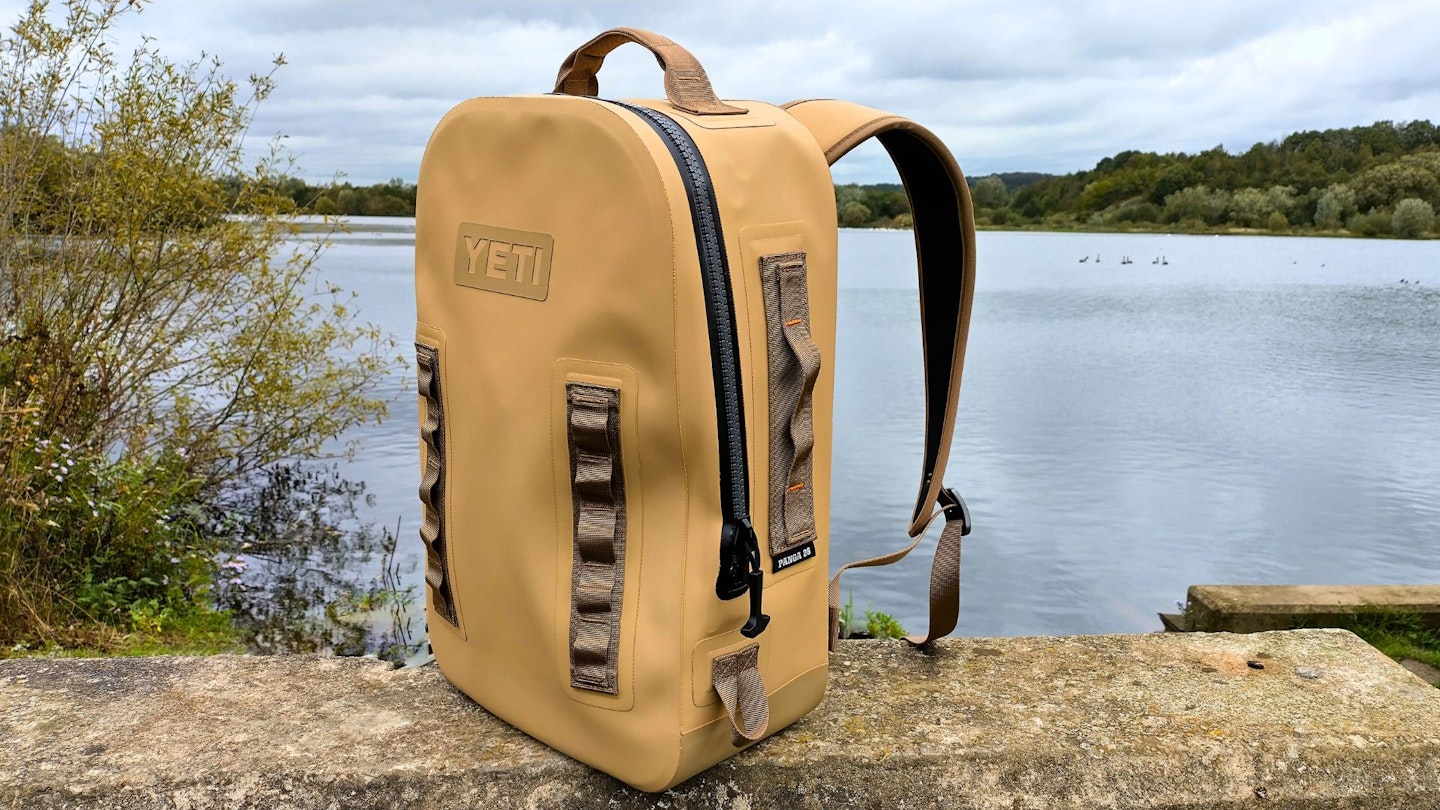 LFTO
LFTOPros
- Impermeable watertightness
- Tough and durable
- Suitable for short walks or commuting
- Looks like a regular backpack
Cons
- Not suitable for hiking
- Overpriced
- No external pockets/stash pockets
| Weight | 1.8kg |
| Fabric | ThickSkin Shell (high density nylon with TPU lamination), EVA base |
| Sizes | One |
| Other volumes | 28L only |
Design and features
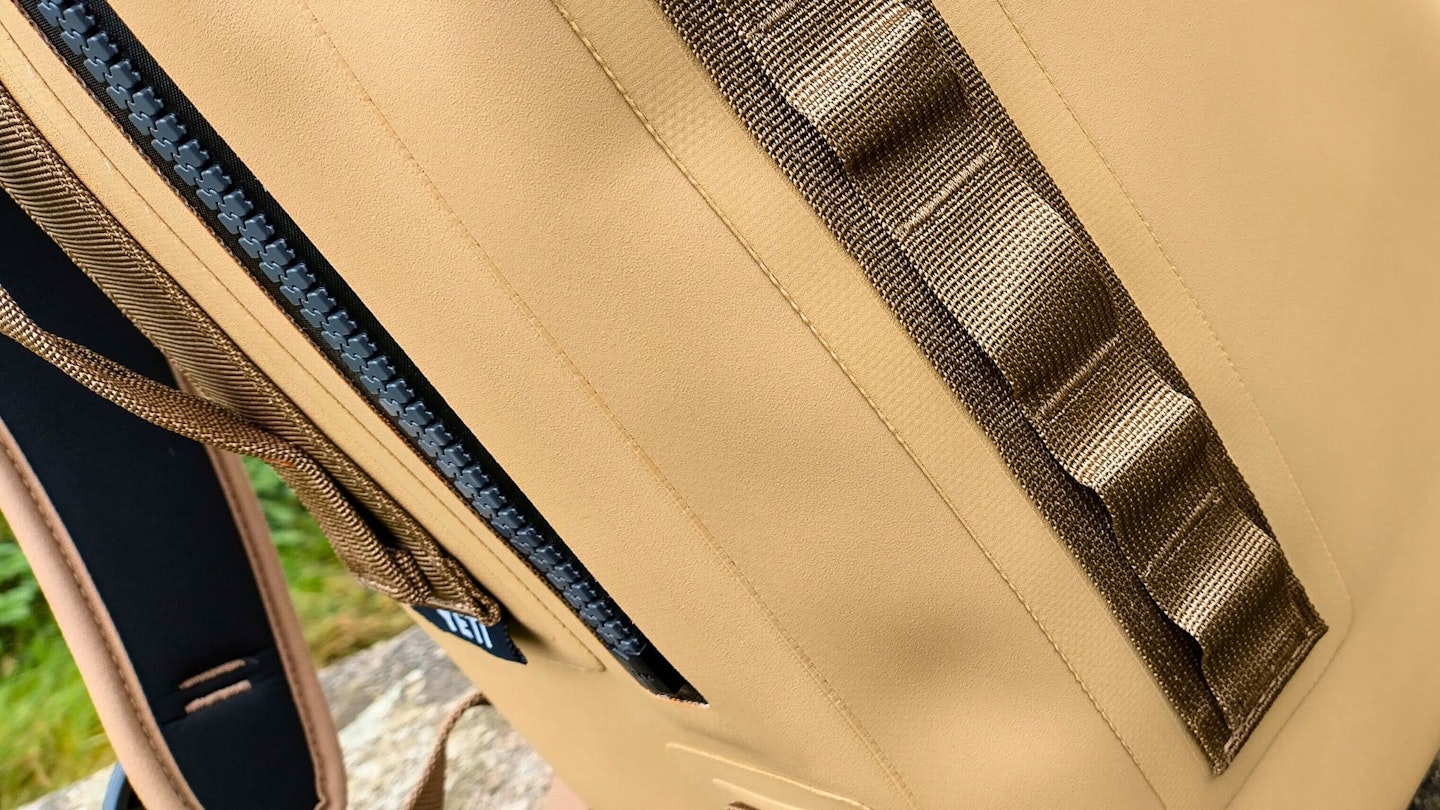
YETI’s Panga backpack eventuated when the brand wanted to make a backpack version of its Panga Duffel. So, YETI simply took the TPU-laminated nylon material it called ThickSkin Shell and plied it into a backpack shape.
Like the duffel, the Panga backpack retains a sturdy EVA-moulded base, metal hardware, and crucially, a totally watertight design using a chunky HydroLock zip. More than water resistant, YETI says the Panga backpack is submersible.

The main material (ThickSkin Shell) is intended to be abrasion and puncture resistant – fulfilling that common YETI trait of longevity. The other components are quite chunky too, including the zip, handles and lash points. As a result this modestly sized 28L pack weighs 1.8kg.
In addition to the main shoulder straps, the Panga backpack also comes with simple, removable chest and hip straps.
Performance

We can’t fault the Panga backpack’s waterproofing. With the zip closed properly, the inside of the bag is airtight and no moisture gets in. Ever. We were impressed with how sturdy the Panga backpack is too. Everything feels like it’s made to outlast the person wearing it and if cared for properly, it certainly feels like something you only buy once.
The flip side of this sturdiness, however, is that it’s a heavy backpack for its size and, more importantly, the stiff shoulder straps didn’t look like they would be particularly comfortable. But we were pleasantly surprised. By no means is this a hiking backpack, but for walking a couple of miles from the car to the lakeshore, for example, it’s absolutely fine.
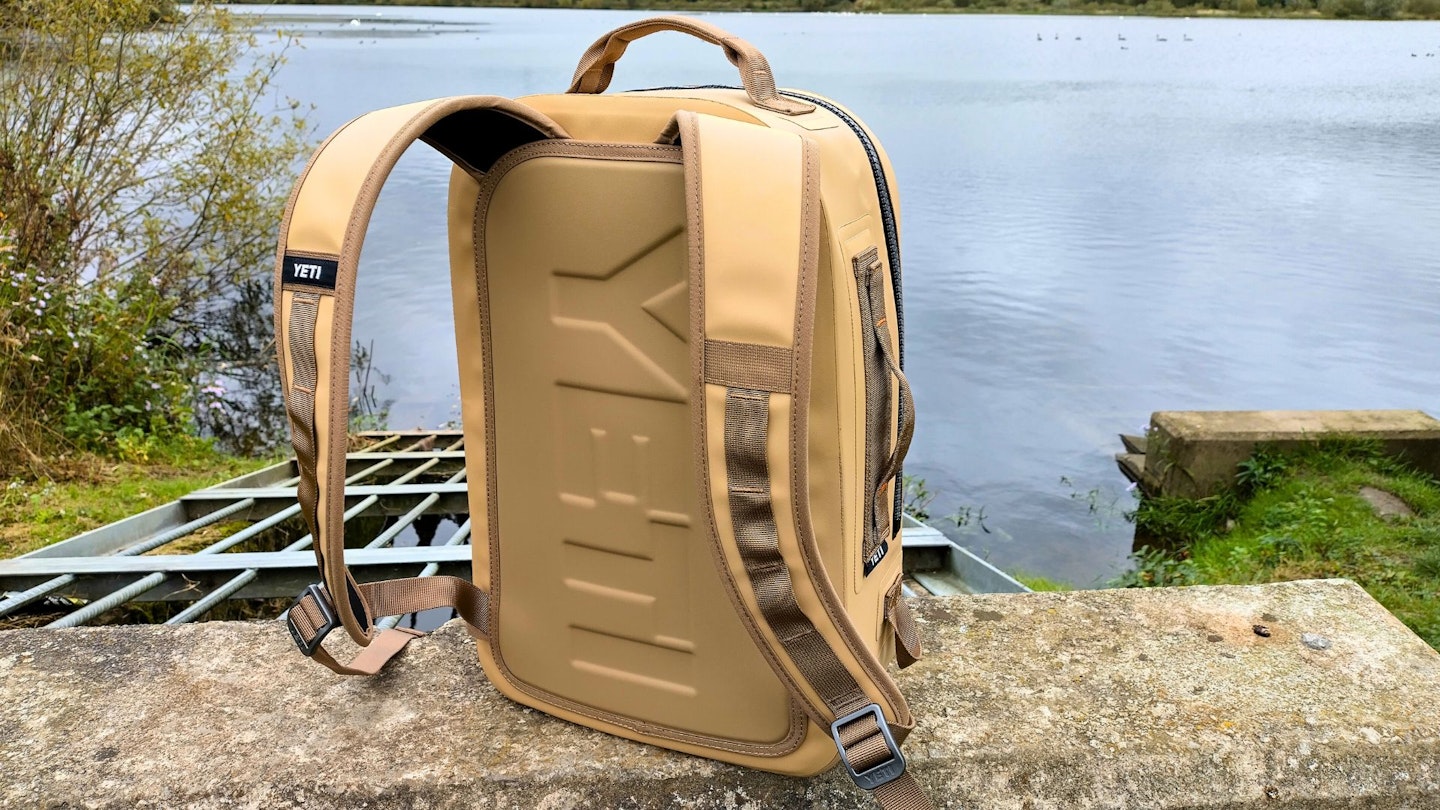
The longest outing we wore the Panga backpack on was 10 miles. Loaded up with about eight kilograms of gear, the shoulder straps were perfectly comfortable, but the flat, non-ventilated back panel is very capable of making your back sweaty. You can attach the removable chest and hip straps if you feel like it, but they don’t make a huge difference.
Inside, there is a medium sized mesh pocket and a sleeve along with the main compartment. Like the overall design, this speaks to the Panga backpack’s intended more for (and I loathe to use this nebulous term) ‘lifestyle’ use than as a hiking backpack. But on looks alone, you’d never make that mistake anyway. But on the topic of pockets, it would be good to see an external drink bottle stash pocket on the Panga backpack.
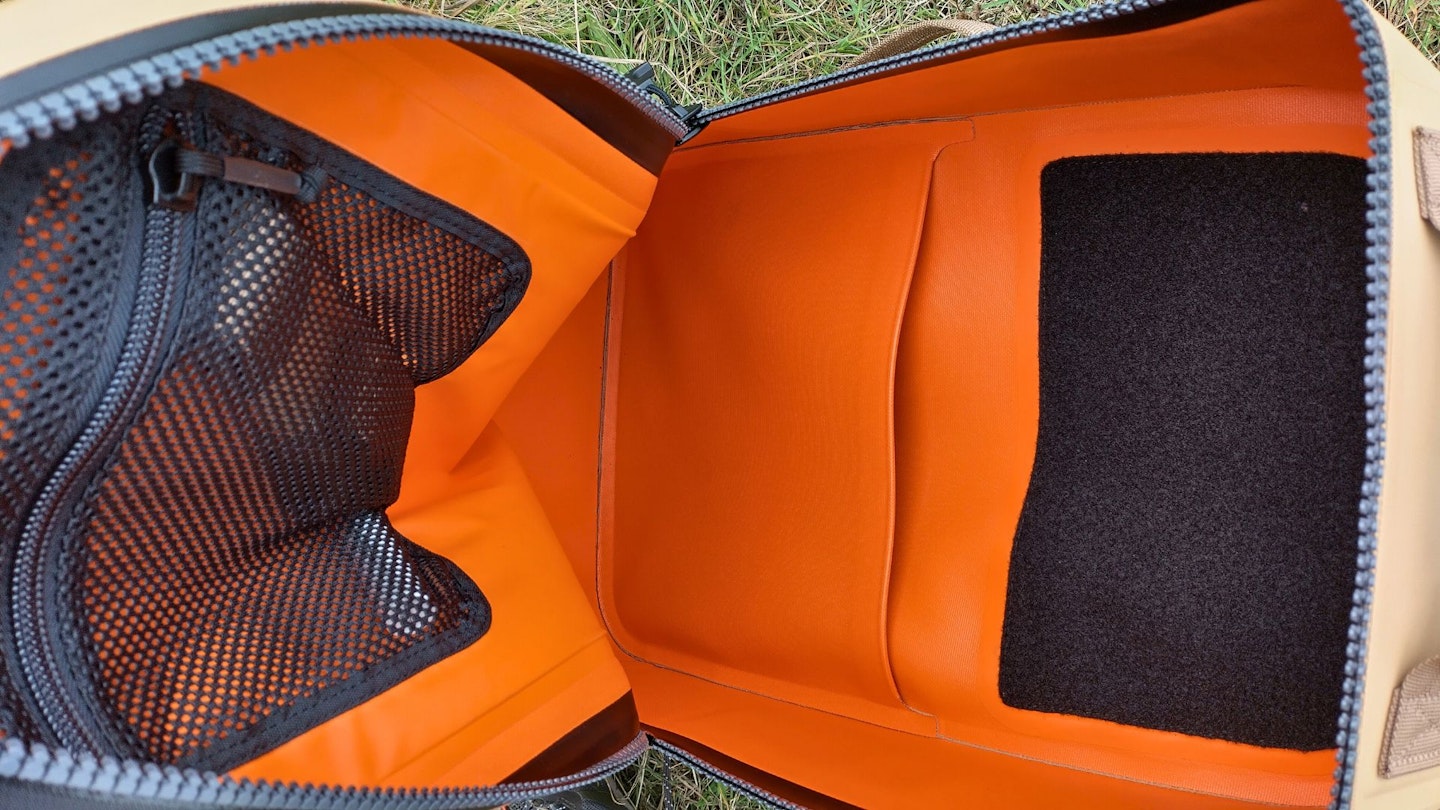
We found the HydroLock zip to be inherently stiff but not annoyingly so. You’ve just got to show it who’s boss. Over time it can get harder to use but when this happens, apply some of the zip lubricant YETI supplies with the backpack and it’s good as new.
Sustainability
Longevity is obviously one of YETI’s key points about its sustainability efforts. It’s not a moot point, either. Making gear and equipment last much, much longer is essential to being a sustainable brand. But nor is longevity a silver bullet.
Having read YETI’s latest (2022 fiscal year) environmental, social, and governance (ESG) report, it’s pleasing to see YETI is reasonably transparent about its goals and progress. For example, it aims to phase out its use of PVC and PFCs/PFAS – it hasn’t got there yet but is on track.
In 2023, YETI also began buy back and buy second hand programs. These are currently only occurring in the US, but we hope to see it expand to its other markets too.
Where it looks like YETI could push harder is around labour. It has the goals in place, but has yet to make substantive progress. Hopefully, that will change very soon.
Price and competition
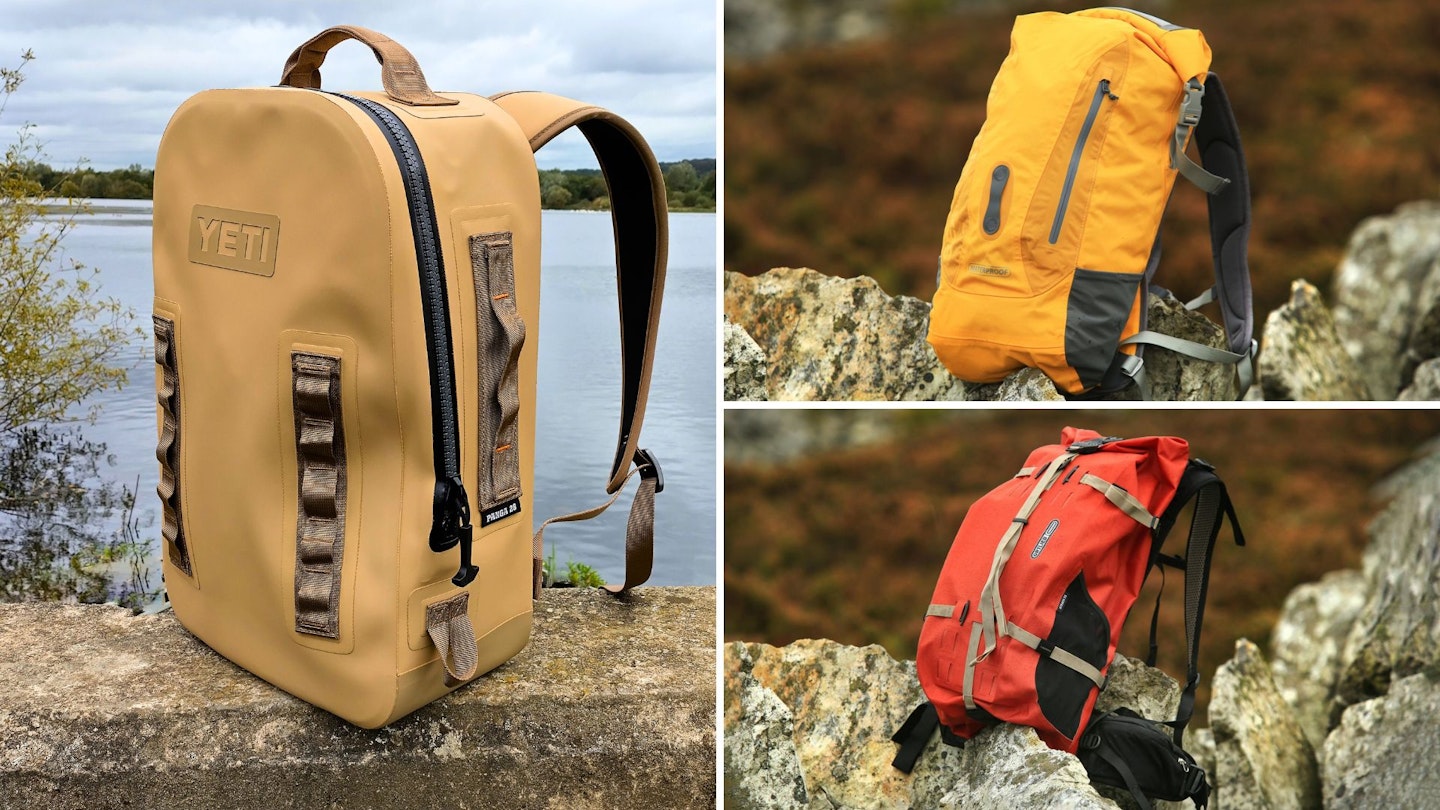
YETI’s pricing of the Panga backpack is a bit perplexing. It’s £300 (at the time of writing).
Yes, it’s one of the sturdiest backpacks we’ve laid out hands on. But the Panga backpack is the price of two of Sea To Summit’s superb Rapid 26L Dry Pack, or seven of Alpkit’s Gourdon 25L – a basic but reliable waterproof pack we’ve used for years.
Praising the YETI for its toughness and then criticising its high price may be a bit hypocritical. But we think the law of diminishing returns is at play here. Highly durable items are worth paying extra for, but in this case, probably not £300.
Verdict
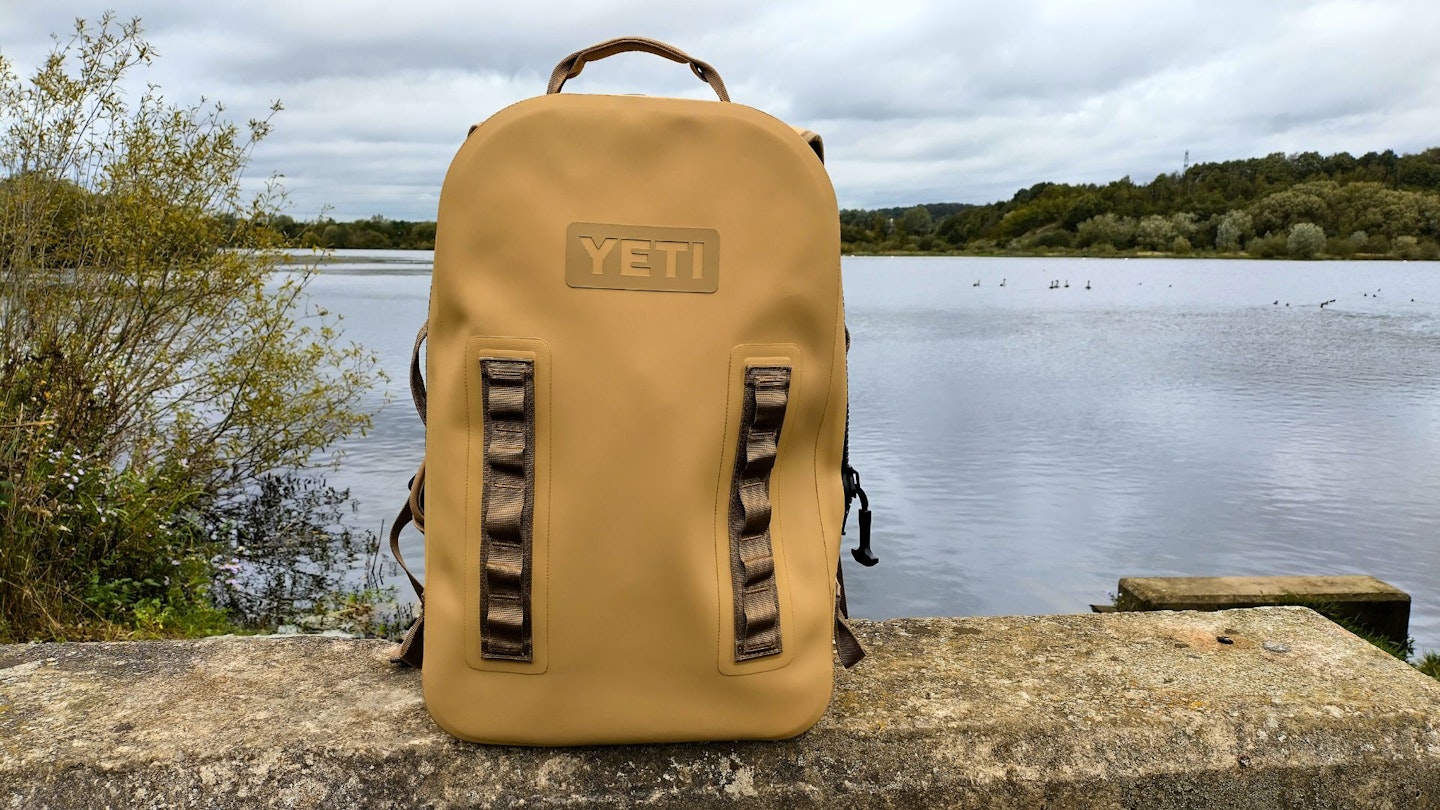
The YETI Panga backpack is incredibly well made; it’s surprisingly comfortable; and it’s waterproofing is faultless. However, it’s comedically priced and isn’t suitable for hiking, like many lighter waterproof packs are.
If the price isn’t a worry, this is a very impressive backpack you’ll enjoy using. But don’t feel like you’re missing out if you’re baulking because there are several waterproof backpacks we recommend that are available for far, far less money.
How we tested the YETI Panga
Checking its waterproofing was obviously the first thing we did. But beyond that, we took the YETI Panga 28L Waterproof Backpack for many outdoor wanders to see how comfortable it was to wear and how practical it was.
Chris Williams is a Digital Content Writer for Live For The Outdoors. He trained as a journalist in New Zealand and has been working on Live For The Outdoors since 2021.
